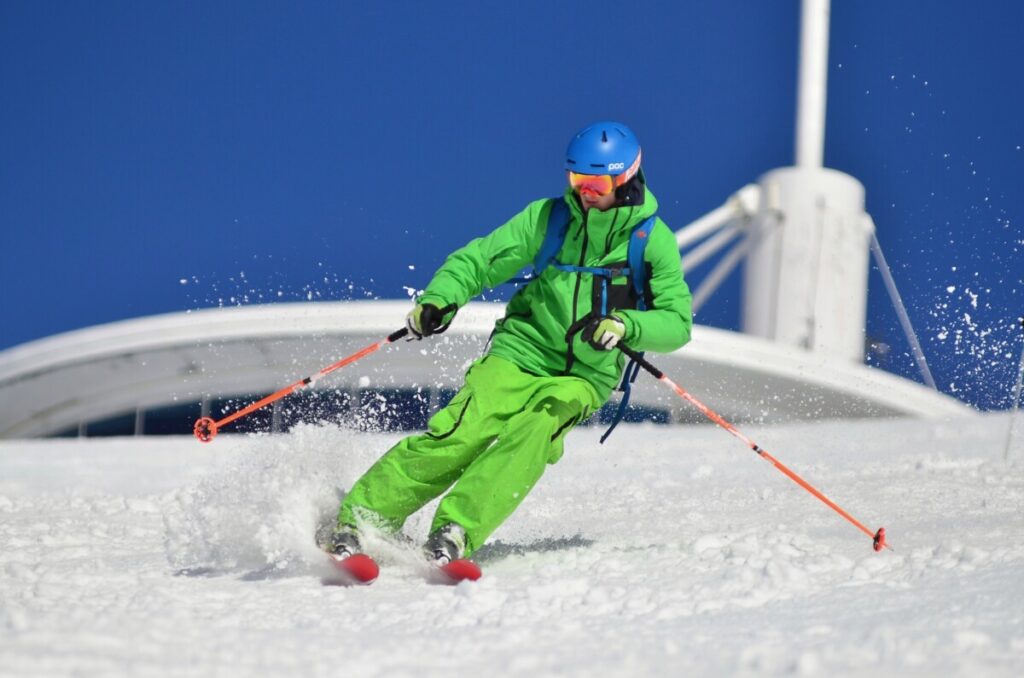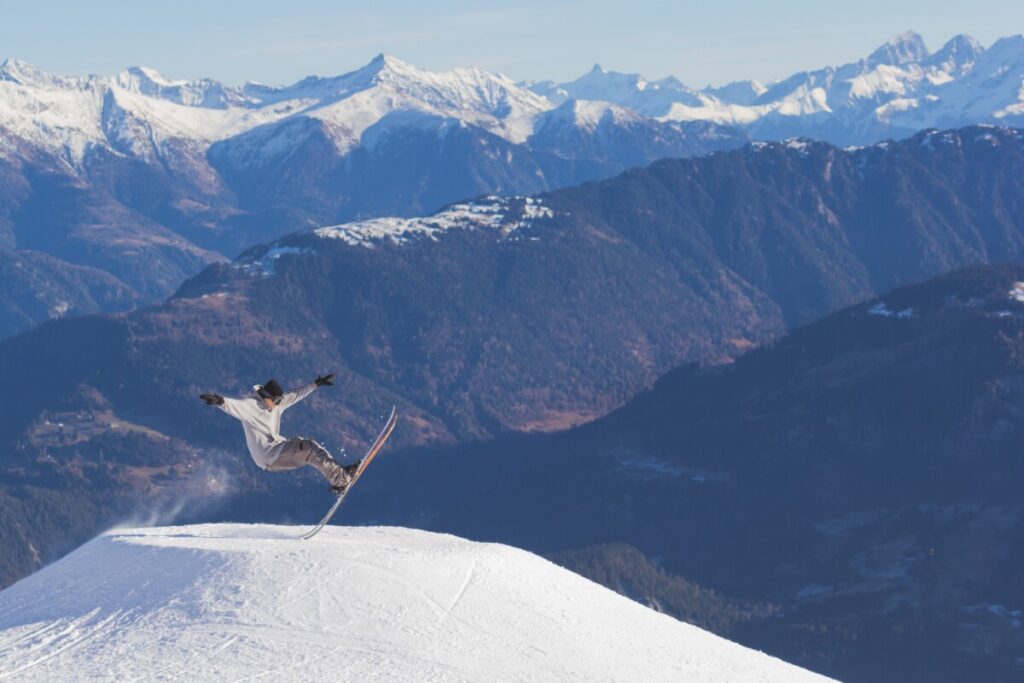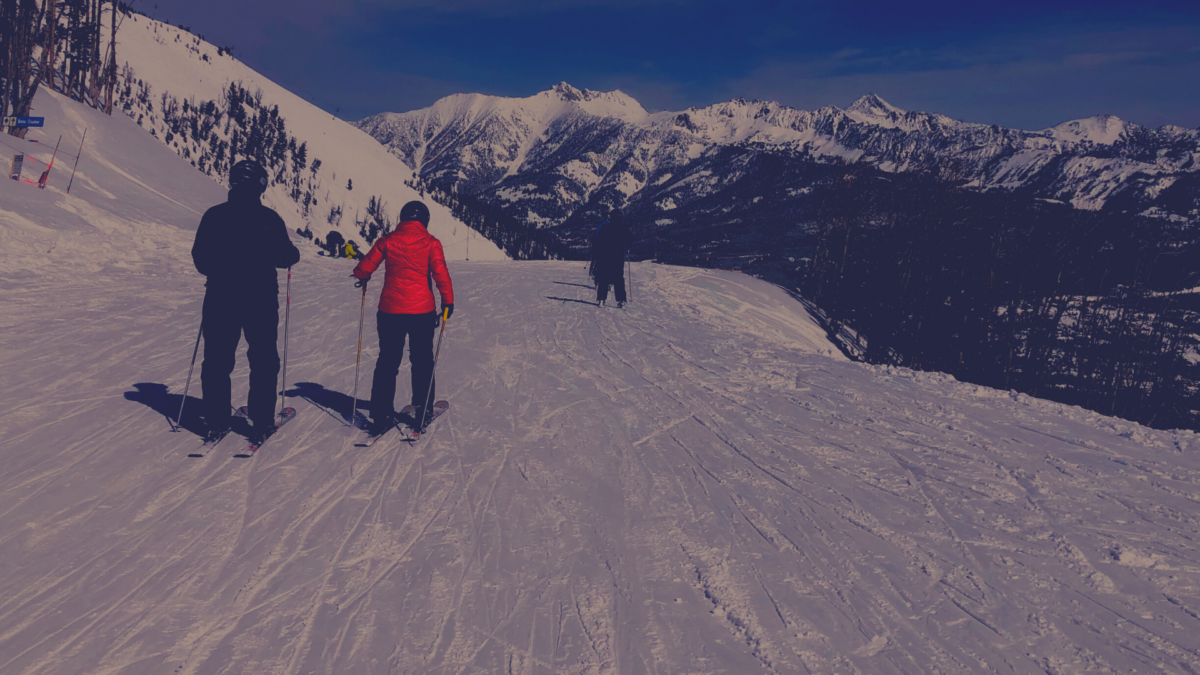
(Photo: Fede Roveda, Pexels, Public Domain)
“I was going probably 20 mph on an icy black diamond…there was a large mound of snow/ice there that I ran directly into/over and I hit the ground hard on my head and my limbs kind of flailed while I slid about 20 feet until I slowed to a stop.” These were the moments before Alex, a freshman at Emory University, realized that this wasn’t a fall she could just shake off, there was something very very wrong. Chances are, if you’re reading this article, you know at least one person who came back from a ski trip with a torn ACL, or MCL like Alex. As more studies surface about trends and injury statistics within the recreational alpine skiing world, there’s always a consistent conclusion. As Dr. Davidson of UCSD observes in his 9-year study on Alpine skiing injuries, “the knee was the most frequently injured area.” In the technologically capable modern day, why haven’t there been advancements made to protect the skier’s knee?
The History
First, we must look back to track the evolution of the modern day ski boot. As outlined in Seth Masia’s article, from 1962 – 1972 there began a transition from the use of leather in ski boots to plastic. Plastic allowed for the boots to have increased durability and to be impervious to water. In 1966, a notable bootmaker, Bob Lange, cemented the plastic ski boot as superior to leather when he sent his boots to the Olympics. Masia says, “the boots were a sensation…laterally stiff plastic boots dramatically improved edging power on ice.” Various ski boot manufacturers began experimenting in the next few years, from a rear entry boot in 1968 to a knee-high boot in 1980. By 1973, the modern ski boot had been fully established, with a removable inner boot, plastic exterior, external buckles, and a high-back. The leather ski boot became a thing of the past. As the era of advancements came to an end, the 1970s brought about an international standard for the engineering of ski boot soles and bindings, as Masia notes, “the rate of lower-leg injuries dropped by 90 percent.”

(Photo: Ethan Walsweer, Unsplash, Public Domain)
A Look into the Knee
A little over 50 years later, we still use the same ski boot design with only minor improvements. It is in no way surprising that lower limb injuries are still extremely common in Alpine skiing. Abstractly, alpine skiing as a sport is about relying on one’s legs to carry oneself safely hurtling down a mountain as fast as possible. While it’s true that after the standardization of plastic boots and bindings, lower-leg injuries plummeted, Dr. Davidson explains that it led only to “reduced injury rates for ankle sprains, ankle fractures, and spiral tibial fractures.” The hard outer shell and detachable ski bindings of the modern day ski boot not only allow for better turning power, but also essentially immobilize your ankle and tibial region. This does not allow for the inversion/eversion of the ankle that commonly results in sprains and breaks.
Noticeably, little of ski boot technology or equipment has addressed the case of skier’s knees. Aljoscha Hermann writes in their article on knee injury prevention that “current ski bindings are not able to provide protection,” in the context of knee injuries. The demands of skiing prevent any sort of rigid plastic like that which protects the ankles for the knee, as alpine skiing requires a constant flexing and bending of the knee joint. It’s difficult to create preventative equipment when skiing relies so heavily on the knees, it requires the full capabilities of the knee’s hinge joint to allow a person to bend and maintain balance on skis.
The powerful ability of the knee also leaves it prone to serious injuries. The knee is made up of a mess of ligaments and tendons, the most common among knee injuries being the anterior cruciate ligament (ACL) and medial collateral ligament (MCL). Both of these ligaments connect the femur with the tibia bone, while the ACL is responsible for preventing the femur from sliding too far posteriorly or anteriorly, the MCL is responsible for ensuring the femur does not slide left or right. Being a hinge joint, meaning that it is only meant to move on one axis, any sort of lateral pressure will make the MCL vulnerable, while cases of the leg hyperextending will put the ACL at risk. On the slopes, this often occurs when a skier is off balance and in a “backward leaning posture,” or “landing on the back-tip of the ski”. In most cases the stiff plastic ski boot actually contributes to knee injury vulnerability, as the ankle is anchored in place by the boot, the stress of recovery is shifted directly to the knee. “In understanding injury mechanisms in skiing,” Hermann says, “we need to consider all those aspects in addition to the kinematics and kinetics of the skier…there is no comprehensive understanding of these mechanisms.”
With so many unknowns, one factor researchers can count on is that ski resorts have broadly been keeping records of injury statistics for years. A study on injury trends in alpine ski and snowboarders at 29 Western Canada ski resorts from 2008-2018, done by Professor Dickson of the University of Canberra, found that in relation to the body, of all alpine ski injuries 50.8% were in the lower limbs. Of those injuries, 30.7% were knee injuries, 8.4% lower leg(shin) injuries, and 6.4% were ankle injuries. About 79.6% of injuries were the result of a fall, and only 10.7% the result of a collision. In relation to skill levels, 97% of beginners, 62.4% of advanced, and 50.9% of expert skier injuries occured on blue/green runs. This was an interesting statistic, as one would naturally assume that most ski injuries would take place on the more difficult black diamond runs, especially for advanced and expert skiers. It speaks to the unpredictability, and that many times skill level will not prevent injuries.
It became especially apparent when I asked Alex about her experience as a skier, “I’ve been skiing since I was about 6. I started on small hills…then Steamboat in Colorado..Utah…and finally Switzerland to ski in the Alps this year.” To add context Alex tore both her ACL and MCL on a ski trip to Sugar Mountain North Carolina, comparatively a much smaller and easier mountain than the Swiss Alps. Over the decade that Professor Dickson’s study covers, alpine skiers “accounted for 49% of all ski and snowboard injuries,” but that statistic had an upward trend to a high of 58% in the 2017-18 ski season where the study concluded. Further, Dickson asserts that while over the course of the study “design and management evolved, and discipline and gender participation ratios have changed…injury rates have remained relatively constant.”

(Photo: Jorg Angeli, Unsplash, Public Domain)
A Potential Breakthrough?
While it’s virtually impossible to isolate one factor that contributes to a knee injury, Hermann argues that the next step in knee injury prevention all goes back to the ski boot binding. Currently, there are two types of ski boot bindings: mechanical and mechatronic. Mechanical bindings, which are much more commonly used, are characterized by a set movement that will trigger the binding to release. “Most common bindings on the market,” Hermann expands, “have a lateral/medial release on the front (toe) element and a vertical release on the back (heel) element of the binding.” Mechatronic bindings are similar with the addition of electronic sensors. Hermann continues, “the binding includes sensors monitoring certain skiing variables and an actor which triggers a release of the bindings.” Although mechatronic bindings seem like they could be a recent development, the last attempt to bring mechatronic bindings to the market was thirteen years ago in 2009 by Salomon, which ultimately was abandoned. Hermann asserts the key to revolutionizing injury prevention is utilizing biomechanics, “a biomechanical approach to a mechatronic ski binding does not focus on typical and atypical skiing forces, but rather on movement patterns that cause injuries.” In order to achieve a device that will track the movement of a skier in real time, there first must be a complete understanding of which specific movements put the most stress on the knee ligaments, so that the sensors may trigger a release of the bindings before an injury occurs. It’s a difficult mountain to climb, with the previously established unpredictability of skiing, the parameters surrounding this trigger must be extremely specific so that the bindings would not release prematurely or falsely.
Recognizing the slow technological progress, Dr. Davidson suggests another solution in the form of “continued skier education”. In the industry of recreational skiing, increased efforts of communicating safety and prevention methods may see a decrease in injuries among those who are new to the resort. Dickson’s study found that “day-ticket holders were the largest group of injured participants at 51.5%, followed by season-pass holders (27.2%) and multi-day passes (13.1%).” This points the finger at a group of people who may be less familiar with a particular mountain or feel the need to ski every minute of the day, as day-pass holders are generally of lower skill and knowledge than those who commit to a season-long pass. Resorts targeting those day-pass holders in safety campaigns may not drastically reduce injury rates, but it certainly is a step forward in acknowledging this ongoing issue.
Conclusion
The past and present of ski injuries show a stalled advancement in prevention technology. For the past 50-odd years, the skier’s knee has consistently, if not increasingly been the most vulnerable to injury, an issue that seems to be widely ignored and accepted as simply one of the risks of enjoying the snowsport. While education on safety and preventative techniques will only reach so many skiers, history has shown that equipment will always have the most influence on a skier’s safety. Study after study has concluded that skiing pushes the knee to its limits, calling for the technology of today to turn its attention towards creating smarter equipment, so that people like Alex may continue to conquer mountains with healthy knees.
Acknowledgement
Thank you to Alex Vigder for being candid about her injury and allowing me to quote her in this project.
Work Cited
Angeli, Jorg. “Person in White Long-Sleeved Shirt Skiing During Daytime.” Unsplash, September 3, 2017. https://unsplash.com/photos/NoXi8qxAHOU
“Causes of ACL Injuries.” Ski-Knee Injury Prevention, Accessed May 1, 2022. http://www.ski-knee.com/causes.
Davidson, T. M, and A.T. Laliotis. “Alpine Skiing Injuries. A Nine-Year Study.” The Western Journal of Medicine 164, no. 4 (1996): 310–314. https://www.ncbi.nlm.nih.gov/pmc/articles/PMC1303504/
Dickson TJ, and F. Anne Terwiel. “Injury Trends in Alpine Skiing and Snowboarding Over the Decade 2008-09 to 2017-18.” Journal of Science and Medicine in Sport 24, no. 10 (December 2020): 1055-1060. https://doi.org/10.1016/j.jsams.2020.12.001
Hermann, Aljoscha, and Veit Senner. “Knee Injury Prevention in Alpine Skiing. A Technological Paradigm Shift Towards a Mechatronic Ski Binding.” Journal of Science and Medicine in Sport 24, no. 10 (June 2020): 1038–1043. https://doi.org/10.1016/j.jsams.2020.06.009
Keith Clinic. “How to Prevent the 4 Most Common Ski Injuries.” December 28, 2017. https://keithclinic.com/posts/back-pain-treatment/how-to-prevent-the-4-most-common-ski-injuries/.
Lucero, Daniel. “Is Skiing More Dangerous than Snowboarding, or Vice Versa?” SnowBrains. January 27, 2022. https://snowbrains.com/is-skiing-more-dangerous-than-snowboarding-or-vice-versa/.
Masia, Seth. “A Short, Colorful History of Ski Boots.” International Skiing History Association, October 1, 2016. https://www.skiinghistory.org/news/short-colorful-history-ski-boots.
Radovanovic, Sandro, Boris Delibasic, Milija Suknovic, and Matovic Dajana. “Where Will the Next Ski Injury Occur? A System for Visual and Predictive Analytics of Ski Injuries.” Operational Research 19, no. 3 (December 2019): 973-992. https://doi.org/10.1007/s12351-018-00449-x
Roveda, Fede. “Person Skiing.” Pexels, February 27, 2019. https://www.pexels.com/photo/person-skiing-3605139/
Ski Magazine. “Top 33 Ski Tips.” March 23, 2020. https://www.skimag.com/performance/33-top-ski-tips/.
Tator, Charles H. Catastrophic Injuries in Sports and Recreation: Causes and Prevention – A Canadian Study. Toronto: University of Toronto Press, 2016. https://doi.org/10.3138/9781442687561
Walsweer, Ethan. “Person in Black Jacket and Black Pants.” Unsplash, January 18, 2021. https://unsplash.com/photos/weFx9RflIfU
“Welcome to Our Online Collections Database!” Online Collections | Colorado Snowsports Museum and Hall of Fame. Accessed May 1, 2022. https://snowsportsmuseum.pastperfectonline.com/.
